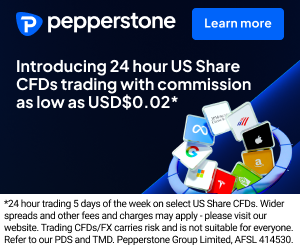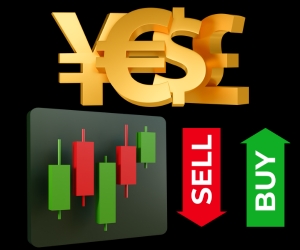FOREX
Learn the trends and drivers that move currency rates and FX pairs—essential insight for traders watching the shilling and global flows.
What Is the 5-Minute Scalping Strategy?
The five-minute chart offers a sweet spot for scalpers: fast enough to catch multiple opportunities each session, yet slow enough to filter out much of the noise that plagues one-minute trading. This strategy provides clearer setups, more time to plan entries, and slightly wider targets that balance risk and reward. In this guide, we’ll explore the basics of five-minute scalping, outline structured setups that traders use, and detail how to manage risk effectively on this timeframe.
LOWEST SPREAD FX BROKER >
What Are WM/Reuters Benchmark Rates?
The WM/Reuters benchmark rates, often referred to as the WMR fix, are the backbone of global foreign exchange pricing. Published at set times each day, they provide a standard reference for currencies, allowing investors, corporates, and traders to price transactions and value portfolios consistently. The most influential of these is the 4 p.m. London fix, a moment that concentrates liquidity and often drives volatility. For anyone active in FX, understanding how these rates are calculated and used is essential.
LOWEST SPREAD FX BROKER >
How Do Gold Prices Impact Forex?
Gold is more than a commodity; it is a mirror of global sentiment and a counterweight to the U.S. dollar. For decades, shifts in the price of gold have rippled through currency markets, influencing everything from risk appetite to central bank reserves. Traders watch the metal’s swings closely, as they often hint at underlying pressures in exchange rates. This article explores how gold interacts with the dollar, why it acts as a safe haven, and how those links shape strategies in Forex.
INVEST IN GOLD >
How to Trade Ranges in Forex?
Not every market trends endlessly. Much of the time, currencies move within defined ranges, bouncing between support and resistance levels. For traders, these sideways markets offer opportunities to capture repeated swings rather than waiting for a breakout. Range trading is about discipline: identifying clear boundaries, using the right tools to confirm levels, and managing entries and exits with precision. This article explores the basics of range trading, the tools used to map ranges, and practical methods for timing trades inside them.
LOWEST SPREAD FX BROKER >
What Is a Currency Swap in Forex?
Currency swaps are a cornerstone of modern financial markets, allowing two parties to exchange principal and interest payments in different currencies. Originally designed for large institutions and central banks, these instruments help manage funding, hedge risk, and support global trade. For traders, understanding how swaps function offers insight into liquidity flows and monetary policy decisions. In this article, we break down the mechanics of a currency swap, explore how institutions use them, and show practical examples that connect directly to Forex trading.
LOWEST SPREAD FX BROKER >
What Is a Stop-Loss Order in Forex?
In forex trading, the stop-loss order is one of the most important tools for protecting capital. It is a preset instruction given to a broker to close a position once the market price reaches a certain level, thereby limiting the potential loss on that trade. While it may seem like a simple safeguard, the stop-loss is central to professional risk management, allowing traders to define their maximum downside before they even enter a position. In markets where prices can swing sharply on news, data releases, or liquidity shocks, the stop-loss order provides structure, discipline, and peace of mind.
LOWEST SPREAD FX BROKER >
What Is a Xenocurrency in Forex?
A xenocurrency is a currency that circulates or is issued outside its domestic market. From eurodollars in offshore accounts to yen traded in London, xenocurrencies have long shaped how money moves globally. They provide liquidity, enable cross-border lending, and influence Forex trading strategies. At the same time, they carry unique risks tied to regulation, credit, and transparency. Understanding xenocurrencies is essential for grasping the mechanics of international finance and their role in modern FX markets.
LOWEST SPREAD FX BROKER >

Libertex
Libertex is a broker with over 25 years of experience, regulated by CySEC and FSC. It operates with a commission

eToro

YouHodler

Plus500
Plus500 is a global broker founded in Israel, listed on the London Stock Exchange (LSE:PLUS) and part of the FTS

AMarkets

BlackBull

AvaTrade

Astropay

FXCM

Saxo Bank
Brent Crude: What It Is and How to Invest
Discover what Brent Crude Oil is, its key differences with WTI, effective investment methods, and the factors influencing its price. An essential guide for traders looking to understand the oil market.
INVEST IN OIL TODAY >
How Interest Rates Impact Commodities
Explore how changes in interest rates affect the commodities market and learn smart strategies to mitigate their effects on your investments.
START INVESTING TODAY >
Learn to Use Moving Averages in FX
Moving averages are essential tools for any Forex trader. But how many types of moving averages are there, and what differences exist between them? In the world of moving averages, there is no one-size-fits-all. There are several types, each with its own purpose and calculation method. Learn how to implement moving averages in Forex to enhance your technical analysis and optimize your trading strategies, avoiding crucial knowledge gaps.
START USING MOVING AVERAGES NOW >
How Do Interest Rates Affect Forex?
Interest rates are among the most powerful forces shaping currency markets. Central bank decisions to raise or cut rates can alter capital flows, shift demand for currencies, and trigger sharp moves across Forex pairs. Traders monitor rate announcements with great attention, as they influence carry trades, expectations of growth, and risk sentiment. Understanding how interest rates affect currency demand and market reactions is essential for navigating the fast-paced world of FX.
LOWEST SPREAD FX BROKER >
What Are Cambrian Points in Forex?
Cambrian points are reference levels used in certain technical frameworks to map out potential turning points in currency markets. Though less well-known than traditional tools like moving averages or Fibonacci retracements, Cambrian points aim to highlight areas where price action may shift direction. For traders, understanding how these levels are defined, identified, and applied in practice can add another layer of insight to strategy and risk management.
LOWEST SPREAD FX BROKER >
What Are Benchmarks in Forex?
Benchmarks in Forex serve as reference points that guide pricing, performance measurement, and risk management. They include widely followed rates, indexes, and standards that bring structure to a decentralised global market. From WM/Reuters fixings to central bank reference rates, benchmarks influence everything from trade execution to portfolio evaluation. Understanding which benchmarks matter and how they are applied helps traders and institutions navigate the currency market with greater precision.
LOWEST SPREAD FX BROKER >
How Do Central Banks Impact Forex?
Central banks are the most powerful players in currency markets. Through interest rate moves, policy guidance, and direct interventions, they shape the value of money and influence global capital flows. For traders, understanding central bank tools and the timing of policy decisions is essential to anticipating volatility. In this article, we explore how central banks steer Forex markets and how traders can navigate the impact of their actions.
LOWEST SPREAD FX BROKER >
What Is Slippage in Forex?
Slippage occurs when a trade is executed at a different price than expected, creating a gap between intention and outcome. In the fast-moving Forex market, where liquidity and speed are critical, slippage can quickly erode profits or amplify losses. Understanding what slippage is, why it happens, and how to reduce its impact is essential for traders who want consistent execution and reliable risk control.
LOWEST SPREAD FX BROKER >
What Is Gann Theory in Forex?
Gann Theory, developed by trader W.D. Gann in the early 20th century, combines geometry, time, and price to forecast market movements. Based on the belief that markets follow natural laws and cyclical patterns, Gann’s methods use angles, squares, and cycles to identify turning points. While complex and sometimes controversial, these tools remain popular among traders seeking structure in price action. In this article, we cover the basics of Gann Theory, explore its core tools like angles and cycles, and show how modern Forex traders adapt these techniques to currency markets.
LOWEST SPREAD FX BROKER >
What Is a Forward Rate Agreement?
A forward rate agreement (FRA) is a contract that locks in an interest rate for a future period. While widely used in money markets, FRAs also influence Forex because interest rate expectations are a key driver of currency values. By fixing borrowing or lending costs, institutions hedge against rate changes that could alter capital flows and exchange rates. In this article, we outline the basics of FRAs, show how they help manage interest rate risk, and explain where they connect directly to FX trading strategies.
LOWEST SPREAD FX BROKER >
What Is a Forward Contract in Forex?
A forward contract in Forex is an agreement to exchange one currency for another at a fixed rate on a future date. These contracts allow businesses, investors, and traders to lock in today’s exchange rate to protect against future currency fluctuations. By removing uncertainty, forwards serve as a key tool for hedging international exposure, managing risk, and planning cash flows. In this article, we explain the basics of forward contracts, show how they are used to hedge, and outline the main considerations around pricing and risks.
LOWEST SPREAD FX BROKER >
How Does Dow Theory Apply in Forex?
Dow Theory, originally developed for analysing stock markets, provides a framework for understanding how trends form, evolve, and end. Its principles—trend identification, confirmation, and volume analysis—are widely used by traders across asset classes. In Forex, where currencies move in long cycles influenced by macroeconomics and sentiment, Dow Theory offers a structured way to separate genuine trends from short-term noise. In this article, we outline the basics of Dow Theory, show how traders confirm currency moves, and explain how to adapt its timeless insights to modern Forex analysis.
LOWEST SPREAD FX BROKER >
What Is Technical Analysis in Forex?
Technical analysis in Forex is the study of price action and trading volumes to identify patterns, trends, and signals. Unlike fundamental analysis, which focuses on economic data and policy, technical analysis assumes that all information is already reflected in price. Traders use charts, indicators, and models to interpret market psychology and forecast potential moves. From simple moving averages to complex oscillators, technical analysis provides practical tools that support decision-making in the fast-paced currency market.
LOWEST SPREAD FX BROKER >
What Is Implied Volatility in Forex?
Implied volatility (IV) is the market’s forecast of how much a currency pair is likely to move in the future. Unlike historical volatility, which looks back at past price swings, IV is derived from option prices and reflects traders’ expectations of risk ahead. In Forex, IV is a vital tool: it shapes option premiums, signals potential breakouts, and helps traders adjust position sizes. In this article, we explain the basics of implied volatility, show how it connects to options pricing, and explore how traders use it to manage risk in currency markets.
LOWEST SPREAD FX BROKER >
What Is a Currency Carry Trade?
A currency carry trade is one of the most recognised strategies in Forex. It involves borrowing in a currency with low interest rates and investing in another with higher rates, capturing the difference as profit. While the idea sounds straightforward, the reality is far more complex. Carry trades hinge on rate differentials, capital flows, and market sentiment, and they carry both attractive returns and sudden risks. In this article, we break down the basics of the carry trade, explain how interest rate gaps drive it, and highlight the rewards and dangers every trader should consider.
LOWEST SPREAD FX BROKER >
What Is a Pip in Forex?
A pip—short for “percentage in point”—is the standard unit of measurement in Forex, tracking the smallest change in currency prices. While only a fraction of a cent, pips are the building blocks of trading: they determine profit, loss, and the cost of spreads. Every trader, from beginner to professional, must understand how pips work to size positions correctly and manage risk. In this article, we explain what a pip is, show how it impacts profit and loss, and walk through the methods for calculating pip value quickly and accurately.
LOWEST SPREAD FX BROKER >
What Is Put-Call Parity in Forex?
Put-call parity is a key principle in options pricing that defines the relationship between the value of call and put options with the same strike price and expiry. In Forex markets, it provides a framework for spotting mispricing and ensuring consistency between option premiums and the underlying currency pair. For traders, understanding put-call parity is essential to grasping how FX options are valued and how arbitrage opportunities may arise when the balance is broken.
LOWEST SPREAD FX BROKER >
What Does Parity Mean in Forex?
Parity is the idea of equality—a one-to-one relationship that sets a clear benchmark in pricing. In foreign exchange, parity shows up in many forms: currencies trading at equal value, theories linking inflation and exchange rates, or models comparing interest differentials. Traders watch parity because it can signal balance, mispricing, or turning points in the market. In this article, we break down the basics of parity, explain how it appears in exchange rate mechanics, and show how traders incorporate it into their strategies.
LOWEST SPREAD FX BROKER >
What Is Trade Hedging in Forex?
Hedging in Forex is the practice of reducing exposure to currency risk in international trade and investment. When companies or investors engage in cross-border transactions, fluctuating exchange rates can alter profits, costs, and cash flows. By using tools such as forwards, options, and swaps, market participants can lock in exchange rates or limit potential losses. Understanding what hedging is, the instruments available, and how to apply them in practice is key to managing risk effectively in global markets.
LOWEST SPREAD FX BROKER >
What Is Par Value in Forex?
Par value is a reference point—the nominal or face value assigned to a currency or security. While it rarely matches market prices, it provides a baseline for contracts, accounting, and valuation. In foreign exchange, par value has historical roots in fixed-rate regimes and still influences how institutions think about stability. In this article, we explain what par value means, explore where it still matters in finance and currency markets, and walk through simple examples to show how traders can use the concept in practice.
LOWEST SPREAD FX BROKER >
What Are Beginner Forex Strategies?
Starting out in Forex can feel overwhelming, but a few simple strategies can make the learning curve far more manageable. Beginner traders don’t need complex systems or dozens of indicators — what they need is a clear framework that balances risk control with straightforward trade entries. From trend-following setups to range trades, the focus is on building confidence through repetition and discipline. This article outlines practical beginner strategies, explains how to manage risk from day one, and provides a step-by-step guide to putting theory into practice.
LOWEST SPREAD FX BROKER >
What Is a Hard Currency in Forex?
A hard currency is money that global markets trust—widely accepted, highly liquid, and backed by resilient institutions. Think U.S. dollar, euro, Swiss franc, pound, and, increasingly, a select few others. Hard currencies anchor reserves, settle cross-border trade, and serve as safe havens when volatility rises. Their credibility shapes funding costs, carry trades, and capital flows across the FX landscape. In this article, we define what makes a currency “hard,” profile the most trusted units, and show how their dominance steers day-to-day price action and strategic positioning in foreign exchange.
LOWEST SPREAD FX BROKER >
How to Optimize a Forex Strategy?
A trading strategy is only as strong as the process behind it. Optimisation in Forex means refining rules, parameters, and setups so that a method adapts to changing markets without losing its edge. Done correctly, it sharpens consistency and improves long-term results. Done poorly, it creates overfitted systems that collapse in real conditions. This article explains how to optimise a Forex strategy step by step, highlights the traps of overfitting, and shows how to stress-test a system to ensure it survives beyond the backtest.
LOWEST SPREAD FX BROKER >
What Is Forex and How Does It Work?
The foreign exchange market—Forex—is where the world’s currencies are priced and exchanged, twenty-four hours a day. It underpins trade, investment, and policy, from a tourist’s card payment to a central bank’s intervention. Prices move on interest-rate expectations, growth and inflation data, risk sentiment, and capital flows. In this article, we define what Forex is, outline who participates—from banks and corporates to funds and retail—and explain how the market actually works: quotes, pairs, spreads, execution, and the plumbing that keeps trillions moving smoothly across borders.
LOWEST SPREAD FX BROKER >
How to Trade Breakouts in Forex?
Breakouts are moments when the market finally escapes from consolidation, pushing past a well-defined support or resistance level with force. For traders, these moves can deliver powerful momentum opportunities, but they also carry the risk of false signals. Trading breakouts successfully requires understanding the basics of how and why they occur, applying tools to filter fake moves, and structuring setups that balance reward with protection. This article explores each of these elements to help you approach breakout trading with clarity and discipline.
LOWEST SPREAD FX BROKER >
What Is a Currency Peg in Forex?
A currency peg ties the value of one nation’s money to another, most often to the U.S. dollar or the euro. Pegs aim to bring stability and predictability, helping countries manage trade and investment flows. Yet beneath that stability lies tension: when fundamentals shift, defending a peg can become costly, and breaking it can trigger sharp market moves. For traders, understanding how pegs work—and the risks that come with them—is essential to navigating global foreign exchange.
LOWEST SPREAD FX BROKER >
How to Use MT4 for Forex Trading?
MetaTrader 4 (MT4) is the workhorse of retail FX trading: a lightweight platform that combines charting, order execution, and strategy automation in one familiar interface. Loved for its speed and huge library of indicators and Expert Advisors, MT4 remains a practical choice for discretionary and systematic traders alike. This guide focuses on getting you productive quickly—what to install, how to configure charts and orders, and the core settings that minimise friction and mistakes. If you want a platform that is robust, extensible, and broker-agnostic, MT4 is an easy place to start.
LOWEST SPREAD FX BROKER >
How to Use RSI for Scalping in Forex?
The Relative Strength Index (RSI) is one of the most widely used momentum indicators in Forex trading, and it can be especially powerful for scalpers. By highlighting short-term overbought and oversold conditions, RSI helps traders time quick pullbacks and momentum bursts with greater precision. Adjusted settings make it adaptable to the fast pace of scalping, where every pip and second matters. This article explores the basics of RSI, how to tailor it for scalping, and practical rules for entries and exits in high-speed trading.
LOWEST SPREAD FX BROKER >
What Are the Best MT4 Scalping Indicators?
MetaTrader 4 (MT4) remains the most popular platform for Forex scalpers, not just for its speed but also for its wide range of custom indicators. The right tools can make the difference between spotting a clean setup and missing it altogether. From moving averages to oscillators and volatility bands, MT4 offers a lightweight yet powerful toolkit that traders can tailor to their style. This article reviews the best MT4 indicators for scalping, explains the role each plays, and shows how to build a simple, effective stack without clutter.
LOWEST SPREAD FX BROKER >
How to Use the Stochastic Oscillator in Scalping?
The Stochastic Oscillator is one of the oldest and most popular momentum indicators, and it continues to hold value for scalpers in the Forex market. Designed to highlight overbought and oversold conditions, it helps traders spot short-term reversals and momentum bursts in fast-moving charts. Yet, because the Stochastic reacts quickly, it can also generate a lot of noise. This article introduces the basics of the Stochastic, explains how to filter out false signals, and outlines clear rules for using it in a disciplined scalping framework.
LOWEST SPREAD FX BROKER >
How to Use Fibonacci for Scalping in Forex?
Fibonacci levels give scalpers a clear map for where pullbacks may pause and where quick targets can sit. By anchoring retracements and extensions to the latest impulse move, traders can frame low-latency entries with predefined risk and reward. Used well, Fibonacci offers structure without guesswork; used poorly, it becomes curve-fitting. This article covers the core Fibonacci concepts for scalping, shows practical retracement and target levels, and sets out strict rules to keep the method disciplined and repeatable.
LOWEST SPREAD FX BROKER >
What Is the 1-Minute Scalping Strategy?
The 1-minute scalping strategy is the purest form of fast trading: quick reads, tight risk, and disciplined execution. On such a short timeframe, your edge comes from structure—clear rules for trend bias, entry triggers, and position management—plus rigorous cost control. This guide explains the essentials of 1-minute scalping, lays out a practical setup and rule set, and shows how to keep spreads, slippage, and errors from eroding your returns.
LOWEST SPREAD FX BROKER >
How to Use Price Action in Forex Scalping?
Price action scalping strips trading back to its core: reading the market’s raw movements without leaning heavily on indicators. By focusing on candlesticks, support and resistance, and market structure, scalpers can make quick decisions directly from price itself. This approach appeals to traders who value simplicity and speed, especially in fast-moving environments where every second counts. In this guide, we’ll cover the basics of price action for scalping, highlight the key patterns to watch, and outline simple rules to keep the method efficient and disciplined.
LOWEST SPREAD FX BROKER >
How to Use Bollinger Bands in Scalping?
Bollinger Bands are a favourite tool among scalpers because they frame volatility in a simple, visual way. By plotting price relative to its moving average and standard deviations, the bands help traders spot when markets are quiet and ready to break out, or when they are stretched and likely to snap back. For Forex scalpers, this means clearer entries, tighter exits, and more precise stop placement. In this guide, we’ll cover the basics of Bollinger Bands, explain how to trade squeeze setups, and show how to manage entries and stops effectively.
LOWEST SPREAD FX BROKER >
What Is Margin Trading in Forex?
Margin trading is one of the defining features of the Forex market, allowing traders to control positions far larger than their account balance. By borrowing capital from a broker, traders can amplify profits but also magnify losses. Understanding how margin works, what margin calls mean, and how leverage impacts risk is essential for anyone stepping into currency trading. This guide explores the basics of margin, its effect on profit and loss, and how to use leverage responsibly.
LOWEST SPREAD FX BROKER >
CFDs: Pros and Cons
Contracts for Difference (CFDs) are one of the most vilified tools in the financial ecosystem. Are they a shortcut to high-capital investing? Or just a casino?CFDs are often accused of fueling reckless speculation, blowing up retail accounts with catastrophic losses, and trapping novice traders. But the truth is, CFDs are neither good nor bad—they’re simply tools. And like any tool, their effectiveness or danger depends entirely on how you use them.This article demystifies CFDs, explaining what they really are, the genuine advantages they offer, and why so many people misuse them. No smoke, no false promises, no conspiracy theories—just analysis and real-world experience.
OPEN A TRADING ACCOUNT >
What Is Position Sizing in Forex?
Position sizing is the cornerstone of risk management in Forex trading. It determines how much of your capital you put at risk on each trade and directly impacts whether you survive long enough to let your strategy play out. By aligning trade size with account equity and risk tolerance, position sizing prevents small losses from becoming catastrophic. In this guide, we’ll explain the basics of position sizing, outline key methods traders use, and show how proper sizing helps control drawdowns and protect long-term performance.
LOWEST SPREAD FX BROKER >
How to Backtest a Forex Strategy?
Backtesting is the process of testing a trading strategy on historical price data to see how it would have performed. For Forex traders, it’s an essential step before risking real money, helping to identify strengths, weaknesses, and potential profitability. Done well, backtesting provides confidence and evidence; done poorly, it creates false expectations. This guide explains the basics of backtesting, highlights the role of data and performance metrics, and shows how to avoid the common pitfall of curve-fitting.
LOWEST SPREAD FX BROKER >
How to Trade Correlated Pairs in Forex?
Currency pairs in the Forex market rarely move in isolation. Many share economic drivers, commodity links, or interest rate dynamics that make their prices rise and fall together. These relationships, known as correlations, can help traders spot opportunities but also create hidden risks when positions overlap. In this guide, we’ll explain the basics of correlation, show how to identify links between pairs, and outline trading strategies that use correlations to manage risk and improve results.
LOWEST SPREAD FX BROKER >










